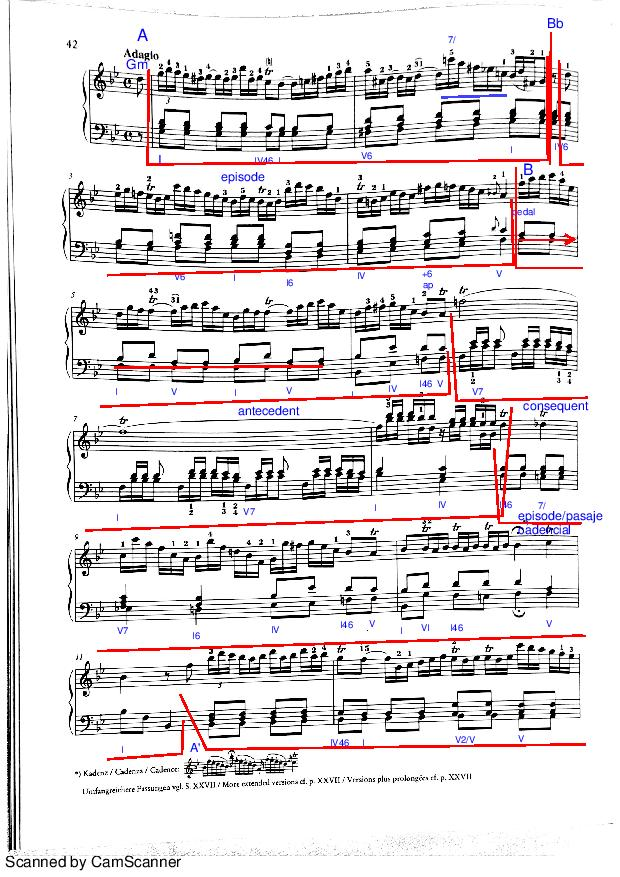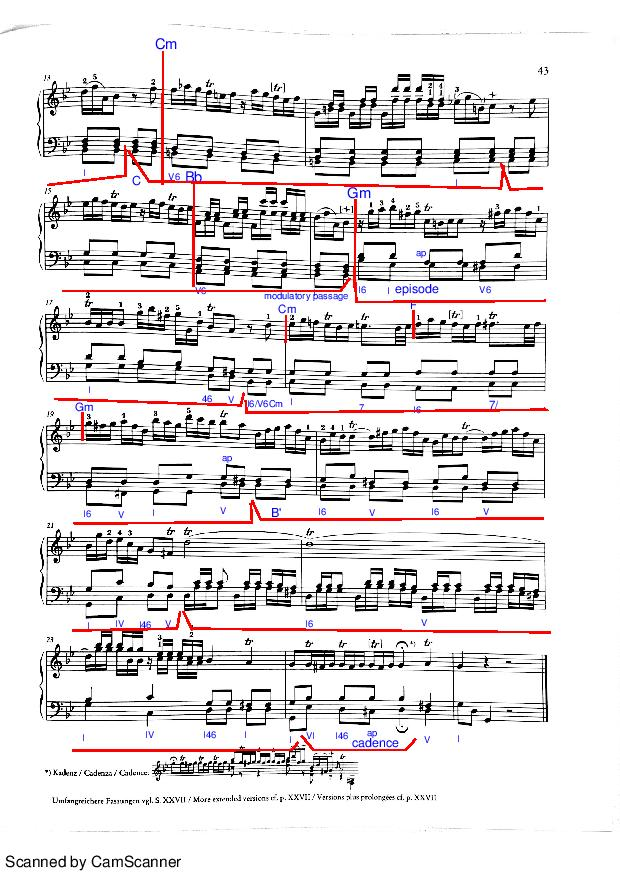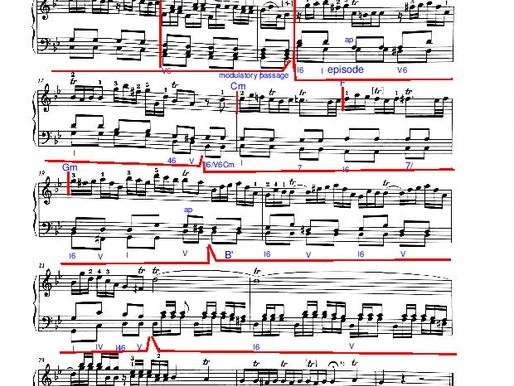Haydn Sonatas, Uncategorized
Haydn Sonata XVI:6 – Analysis
Third movement – Adagio

This movement is structured in two sections with two virtuoso cadenzas. The first section starts with an “A” theme spread through two bars. Due to the information condensation of this number, we can easily see a full phrase exposed in 2 bars.
The piece is rhythmically steady leaving to harmony and melody the major task of defining personality of the themes.
The first section starts with “A” in the tonic gm. “A” is written in a clear homophonic texture that complements a densely ornamented treble with a clean bass line enhanced by an almost step-wise voice-leading of the melodic fillers. This texture will remain the same throughout all the piece only being temporarily inverted – starting on bars 6 and 21-. It is important to highlight we, performers, should make sure this very clear balance between bass and treble is never disturbed by an inappropriately laud bass. The way we deal with the pulse is also paramount for the proper delivery of the piece. To aid this effect we can bring up the interaction of strong and weak beats in the bass following the 4/4 natural accentuation.
After “A” we find a short variation leading to B that is basically a progression responsible for modulating from gm to Bb. “B” harmonically rebounds between the I and the V degrees with its antecedent on the same texture as the entire piece and its consequent focused on the bass while accompanied with a long trilled pedal note on the treble.
In the first section B is going to be followed by a long episode heading into a cadence on Bb. After a virtuoso cadence at bar 10, symmetric with the one on bar 24, the section finishes in Bb

The second section works almost perfectly as a transposed variation of the first one. The choice of modulating “A” to Bb, the tonic’s relative major, refreshes the atmosphere dramatically. “C” is a condensed variation of B, in the form of a periodic phrase, with the thirds in the treble instead of the bass; harmonically speaking it directs the music back to gm. “C” is followed by a short episode defined by a progression which directs the attention to cm by alternating between the V and I of gm until gm becomes V of cm. The modulatory passage that starts on bar 18 is based on the head of “A’s” motive and modulates back to gm. “B’” is re-exposed in gm leading into the last virtuoso cadenza without major diversions. The piece finishes in gm its tonic.
#HaydnProject #Haydnproject

